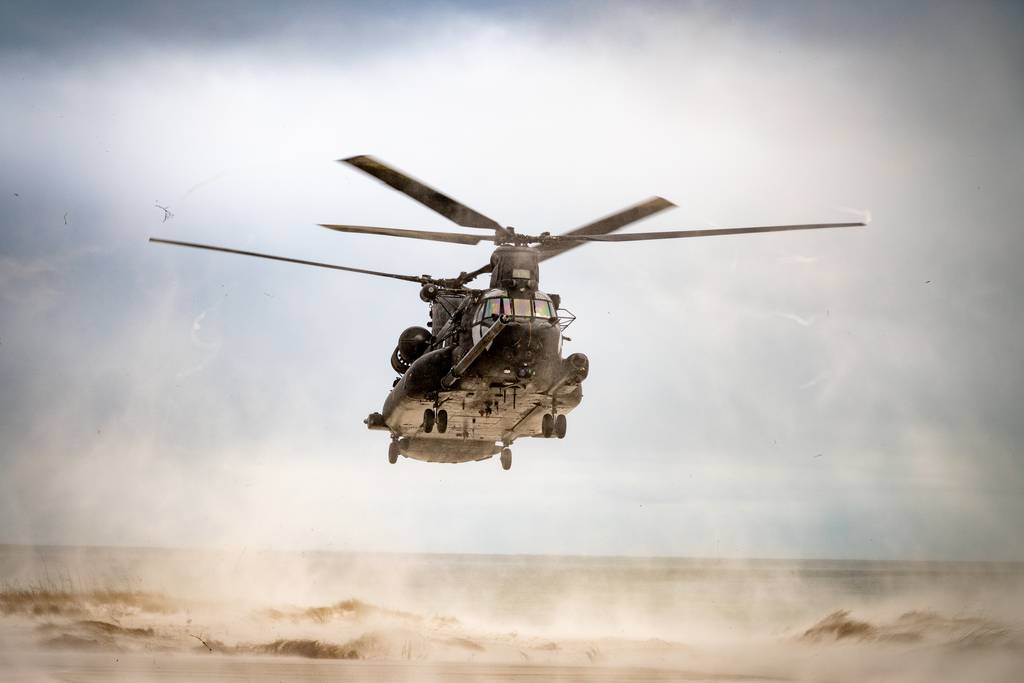TAMPA, Fla. — Special operations rotary-wing pilots need to be able to navigate without GPS, and the fleet itself is in need of electric-powered aircraft, according to the program executive officer for U.S. Special Operations Command’s rotary-wing assets.
Those features are not simply nice to have, but are necessities to keep these crucial platforms flying in contested environments, Geoff Downer said Tuesday at the SOF Week conference in Florida.
“We know the window is closing to stay on GPS when denied,” Downer said, referring to technology that can prevent access to positioning systems. The military services are already trying to ensure navigation for the warfighter, but “flying 100-300 feet at 120 knots causes a unique problem for some solutions that are out there.”
Additionally, to expand the pilot’s situational awareness, the command is looking for better sensor data fusion — a recently funded objective. That effort would merge systems and draw different information from the same sensors, thereby reducing the payload of the aircraft, he explained.
For more than four decades each system added to nearly any aircraft did about one thing, which led to stovepiped features and the addition of evermore technology onto platforms that need to be lean and fast.
As an example, Downer noted that special operations personnel were able to cut 1,000 pounds from the MH-60M Black Hawk by changing wiring and making structural modifications. They increased the lift by 300 pounds using a 10% rotor tip modification.
That’s the sweet spot for SOCOM, Downer said, because often the organization takes what the services provide, and then get to work on modifications that fit mission sets.
That approach has proved its worth, as SOCOM continues to use airframes that date back to the Vietnam War, such as the MH-47G Chinook. Though nearly everything on those aircraft was replaced or upgraded multiple times.
Beyond current modifications, the rotary-wing fleet is expected to undergo major technology changes. For example, the Army is acquiring future vertical lift aircraft — the Future Long Range Assault Aircraft and the Future Attack Reconnaissance Aircraft.
In 2022, command officials pushed industry on electric-powered options to replace the AH-6M for close air support and the MH-6M for troop transport. New aircraft should more than double the speed of the existing fleet, according to program requirements.
The aircraft is expected to continuously receive upgrades and use until 2033. Following that, the command seeks to sustain and divest by 2040.
The Future Attack Reconnaissance Aircraft will take over many mission needs as it enters the field, Downer noted.
Meanwhile, the electric-powered effort is proving difficult, Downer said.
So far, the technology isn’t providing the hover time needed for special operations missions. But the team is working with the Defense Advanced Research Projects Agency on a program for an electric-vertical-takeoff-and-landing platform, Downer added.
Todd South has written about crime, courts, government and the military for multiple publications since 2004 and was named a 2014 Pulitzer finalist for a co-written project on witness intimidation. Todd is a Marine veteran of the Iraq War.








